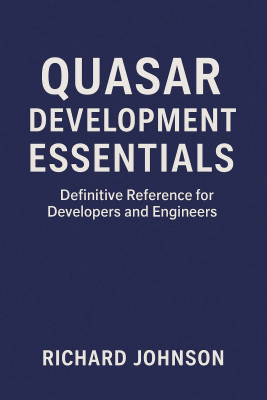WorldWind Development Essentials by Richard Johnson

Synopsis
"WorldWind Development Essentials"
WorldWind Development Essentials is a comprehensive guide designed to empower developers, researchers, and technology leaders with a deep understanding of the NASA WorldWind platform—a pioneering open-source engine for interactive 3D visualization of geospatial data. Beginning with the historical context and vision behind WorldWind, the book delves into the platform's core architecture, supported SDKs across Java, web, and mobile, and its thriving open-source ecosystem. Readers are equipped with practical guidance for setting up robust development environments and understanding the full breadth of WorldWind’s visualization and extensibility capabilities.
The book presents an in-depth exploration of the WorldWind rendering architecture, from scene graph management and real-time tile rendering to efficient resource allocation and performance optimization. It addresses the integration and management of diverse geospatial data types, covering key standards (OGC WMS, WMTS, WFS), raster and vector processing, real-time data feeds, and advanced data validation techniques. Specialized chapters dissect the nuances of deploying and extending WorldWind on Java desktop, web, and mobile platforms, including best practices for UI composition, concurrent processing, and cross-platform distribution.
Progressing into advanced territory, WorldWind Development Essentials provides readers with the skills to build analytical visualizations, animations, and simulations incorporating 3D models, machine learning, and big data pipelines. It also examines critical topics such as application security, governance, cloud-native deployment, and disaster recovery, ensuring robust, compliant, and scalable solutions. The book concludes with a forward-looking perspective on WorldWind’s evolution—highlighting AI integration, AR/VR extensions, edge computing, and its growing role in sustainability and open science—making it an indispensable resource for anyone seeking to master geospatial application development with NASA WorldWind.
Reviews
Write your review
Wanna review this e-book? Please Sign in to start your review.







